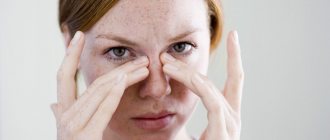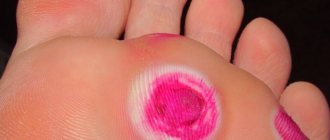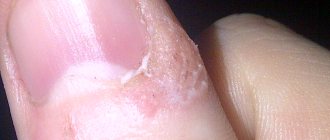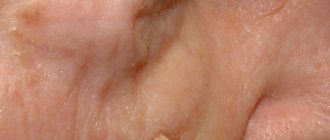An allergic reaction is a pronounced response of the body’s immune system to exposure to a protein substance (allergen). Every year there are more and more patients suffering from various forms of the disease. One of the most common reactions is an allergy to the eyes involving the skin around them2.
The problem significantly worsens a person’s life, so medicine is constantly improving treatment options. Now you can effectively cope with the reaction to the eyes and even prevent its occurrence1.
Causes of an allergic reaction
Allergies on the face around the eyes are directly related to the contact of irritants with the skin and (or) the mucous membrane of the eyeball. An excessive response of the immune system occurs not only when an allergen comes into contact with the skin, but also when the body is exposed systemically. Therefore, there are many reasons for the formation of allergy symptoms in the eye area.
Main factors causing the problem:
- Plant pollen during the flowering period (three periods are distinguished: flowering of trees, bushes and grasses, field grasses);
- Room dust containing fungi;
- Animal fur (allergens can be any pets or wild animals);
- Bird fluff;
- Contact lenses;
- Sunlight (the occurrence of a pseudo-allergic reaction);
- Medicines (local drops, ointments, creams or systemic drugs);
- Household chemicals (depending on the composition, there can be either a true or false allergy);
- Cosmetics (any cosmetics, except special hypoallergenic ones, can cause a response from the body).
Finding out the cause of the problem is a necessary step in successfully eliminating clinical manifestations. The task of a person who suffers from an allergy to the skin around the eyes is to understand the mechanism of its occurrence in order to remove it from his life. In some cases, this is enough for a full life.
Classification of all rashes
In most cases, the rash on the face consists of nodules, blisters or spots:
- The bubble is located in the skin or under it, has a characteristic bottom, tire and cavity in which the serous contents are located. May appear when the skin is in normal condition.
- The nodule is characterized by a change in the relief and color of the skin; it can be either inflammatory or non-inflammatory in nature. In some cases, a bubble appears on the surface of the node. The consistency of the nodules can be dense or soft, and also vary in mobility.
- The spots look like a red area with a characteristic border; they do not change the relief or consistency of the skin, but change its color.
Allergy symptoms around the eyes
Recognizing an allergic reaction and distinguishing it from other diseases of the visual system is not very difficult. One of the main points is the sudden onset of symptoms and their connection with any irritant. It is not always immediately clear what exactly the allergen is, then you need to evaluate the symptoms.
The following signs indicate an allergic nature of the problem:
- Burning and stinging in the eyes;
- Drying of the mucous membrane;
- Swelling of the eyelids (swelling can be so severe that the eyelids cannot be opened);
- Severe itching (may be in the eyes, nose, ears at the same time);
- Lacrimation (profuse);
- Deterioration of vision (temporary, but can be permanent, depending on the type and duration of the disease);
- Photophobia;
- Redness of the skin around the affected area;
- The appearance of small pinpoint rashes (urticaria).
Clinical manifestations are usually symmetrical. The only exceptions are situations where the local remedy was used only on one eye.
Rash around the mouth
A rash near a child’s mouth is a signal that something is wrong in his body. They can occur due to exposure to both external and internal factors.
The most common causes of this condition include:
- irritation from drooling;
- allergic reaction;
- problems with the functioning of the digestive system;
- worms and other parasites;
- enterovirus infection;
- oral dermatitis;
- infectious diseases, reactions to bites, chapping and more.
Types of allergic reaction
Exposure to allergens can cause different types of body responses. Depending on the causes, mechanisms, and manifestations, allergies in the eye area are divided into:
- Vernal keratoconjunctivitis. A chronic seasonal disease that is typical for children and adolescents during the period of hormonal changes in the body.
- Hay fever. Seasonal response of the body to irritation by plant pollen. As a rule, it occurs annually during the flowering period of a certain plant. Any pollen can cause a problem, but most often it is ragweed and birch3.
- Chronic form. In the case of constant exposure to an allergen or a severe reaction, an immune response occurs that worries for weeks, then passes and occurs again.
- Acute reaction. Periodic allergies that occur specifically at the moment of exposure to an allergen. After it disappears, the reaction quickly passes and does not occur until contact occurs again.
Acute infectious eye diseases
Abscess and phlegmon are a limited or diffuse infiltrative purulent process of the tissues of the eyelid. The reasons for its appearance may be: boil, barley, ulcerative blepharitis, meibomitis, inflammatory process in the maxillary sinuses, eyelid wounds. Symptoms include hyperemia and swelling of the skin, pain and tension in the area, and fluctuation is possible.
After surgical or spontaneous opening and evacuation of pus, the phenomena of inflammation quickly subside. Local bactericidal and bacteriostatic drugs intramuscularly and locally are indicated as treatment.
Erysipelas of the eyelids is often caused by hemolytic streptococcus, less often by other microorganisms. The inflammatory process usually spreads from neighboring parts of the face. The disease is accompanied by severe pain, fever, and chemosis of the conjunctiva. With timely treatment it ends favorably.
Penicillin antibiotics are prescribed intramuscularly as therapy. Streptonitol ointment is used, and a complex of vitamins is prescribed internally.
A furuncle is a purulent-necrotic inflammation of the hair follicle and surrounding tissues of the eyelid. The causative agent of the disease is staphylococcus. Inflammation is localized in the eyebrow area, less often on the edge of the eyelid. It is a dense, painful, edematous nodule. After a few days, a necrotic core forms in its center. There is an opening with a small amount of pus, granulation and healing with a scar.
The treatment is complex. Antibiotics are prescribed orally or intramuscularly. The skin around the inflammation is wiped with camphor alcohol and hydrogen peroxide. Local dry heat is recommended. If the boil has abscessed, surgical opening is indicated.
Is it possible not to treat an allergic reaction?
Clinical manifestations in the eye area cause significant discomfort. The condition will worsen with continued contact with the allergen. But even stopping exposure to the irritant does not always provide full recovery.
An integrated approach to the treatment of an allergic reaction: avoiding allergens in combination with taking medications gives a chance for a full recovery and a return to a full life. In addition, timely use of medications that relieve the condition allows one to avoid serious complications when allergies turn from local to systemic3.
Symptoms requiring increased attention:
- Swelling of the entire face;
- Difficulty breathing;
- Swelling of the tongue;
- Increased breathing;
- Increased heart rate;
- Blue face;
- Reduced pressure.
Emergency care for suspected angioedema or anaphylactic shock should begin with calling an ambulance1. Eye allergies rarely lead to such complications. The key role here is played by the duration of exposure to the allergen and proper treatment.
Elimination of fungal nodes
Fungal nodes can be eliminated by cutting them and removing them by scraping out fungal deposits. Most often, the incised area is treated with silver nitrate or iodine solution. Such activities are prohibited from being carried out independently at home, as this can only lead to a complication of the general condition.
Usually, a rash near the mouth and eyes is treated after the doctor makes an accurate diagnosis and receives the results of all tests. Only in this case will he be able to select the appropriate medications and ointments that will help get rid of the ailment.
Treatment of skin allergies around the eyes
The first priority action when signs of allergy occur is to stop contact with the allergen. If symptoms appear for no apparent reason, you should change your position, take a shower, and wash your face. This increases your likelihood of reducing your exposure to the allergen, even if you don't understand what caused the symptoms.
Additionally, antihistamines must be taken, preferably second generation4. These drugs include drugs based on cetirizine, for example, Cetrin. The work of drugs in this group is to block histamine receptors, thereby relieving the clinical manifestations of allergies. The drugs begin to act in 15-20 minutes, so they quickly improve a person’s condition4.
Additional general recommendations:
- Do not rub your eyes, this aggravates the clinical manifestations.
- Use corticosteroid ointments with caution (it is advisable to consult with specialists before using this).
- Choose your antihistamine carefully.
- During treatment, avoid cosmetics, creams and any chemical products for your facial skin.
- If you are allergic to animals or pollen, do wet cleaning more often, wash clothes after returning from the street or contact with an animal.
The rate of disappearance of symptoms is influenced by: the amount and duration of exposure to the allergen, the body’s reactivity, and the use of an antihistamine.
Herpetic diseases
Herpetic dermatitis of the eyelids usually occurs as herpes simplex or herpes zoster.
In the form of herpes simplex, which is caused by a filterable virus, the onset of the disease is acute. The skin of the face and eyelids turns red, transparent blisters appear and then burst. The contents of the bubbles dry out, forming crusts that disappear without a trace after 1-2 weeks. The disease may recur.
Treatment. The elements of the rash are lubricated with a solution of brilliant green. The crusts are treated with oxolinic ointment or Zovirax cream. To prevent the occurrence of secondary infection, local medications with antibiotics are prescribed.
Prevention measures
Allergies to the skin under the eyes can only be prevented if you already know what exactly causes them. In such a situation, you can take an antihistamine in advance so that the symptoms are weaker or do not appear at all4.
To enjoy a full life, it is not recommended to ignore the presence of allergies. Timely administration of the drug will help to cope with the problem.
Bibliography:
- Egorov A.E. Treatment of allergic diseases of the anterior segment of the eye / A.E. Egorov // Russian Medical Journal. – 2000. – T. 1. – Issue. 2. – pp. 52–55.
- Kurbacheva O. M. Pollinosis. Modern aspects of diagnosis and treatment of allergic diseases. Mater. conf. - M. - 2009. - P. 31 – 37.
- Maichuk Yu. F. Seasonal hay fever is the most common form of ocular allergosis. Part I. Epidemiology, etiology, pathophysiology, clinical picture, diagnosis. Ross. ophthalmol. magazine. — 2010. — No. 1. — P. 37 – 41.
- Tataurshchikova N.S. Modern aspects of the use of antihistamines in the practice of a general practitioner. // Pharmateka. 2011. No. 11. pp. 46–50.











